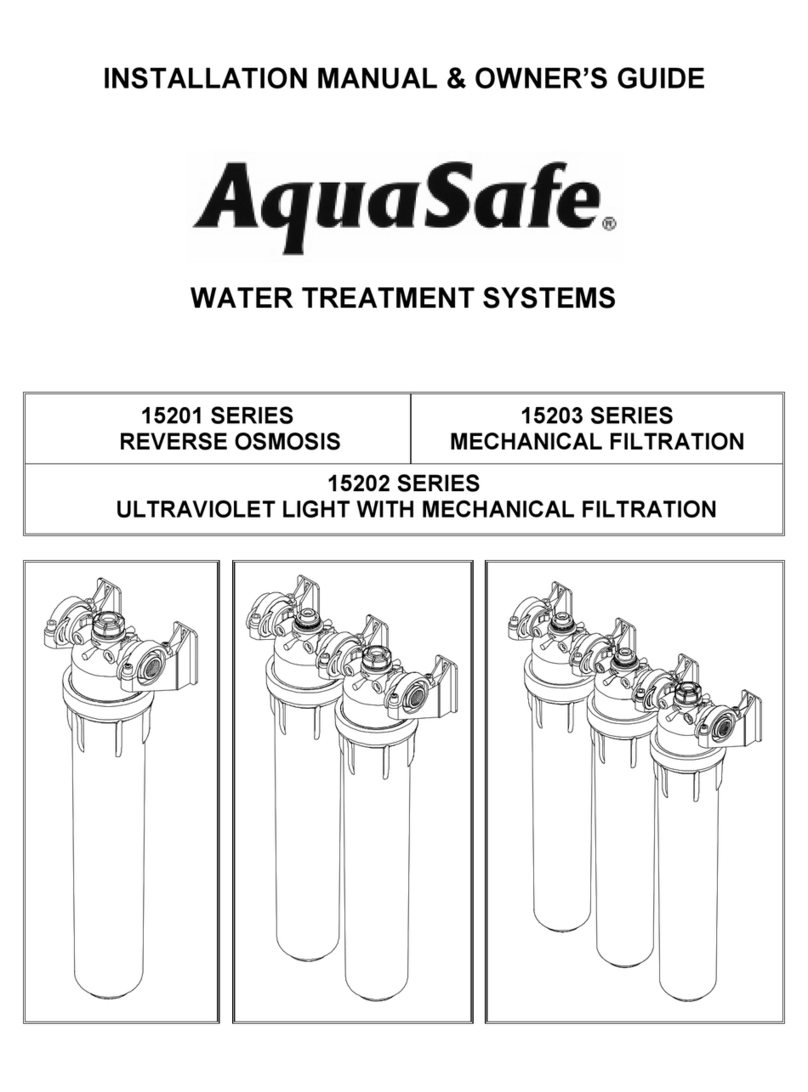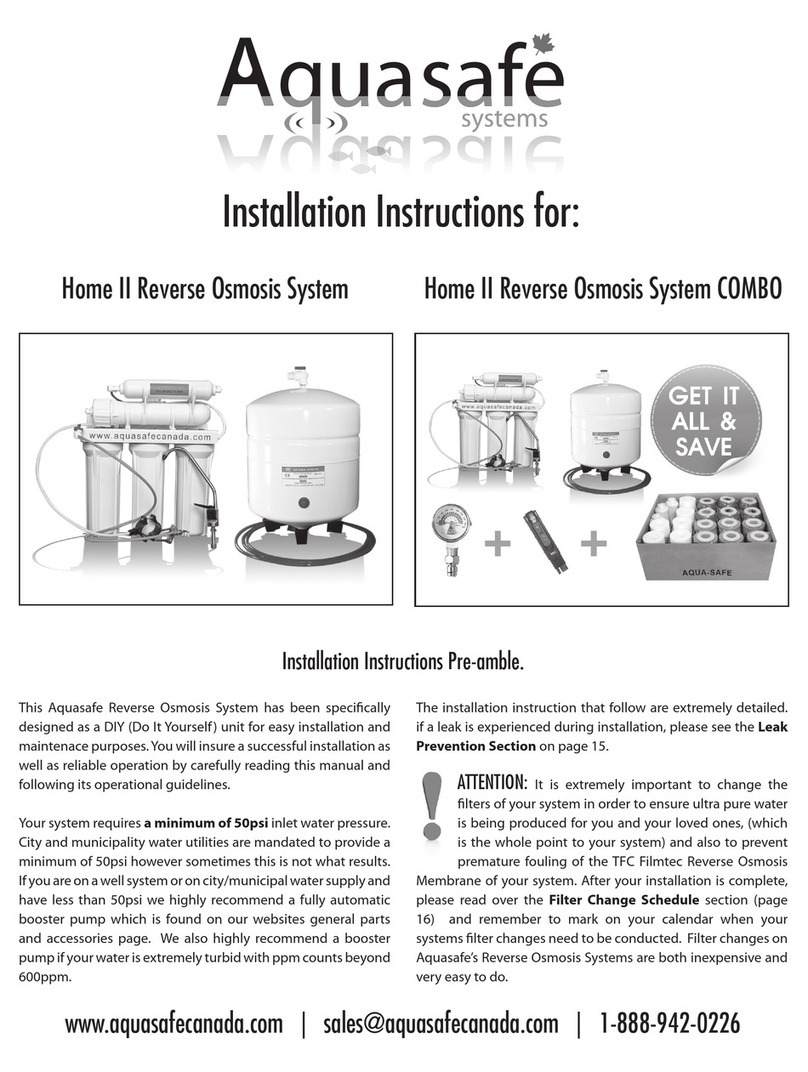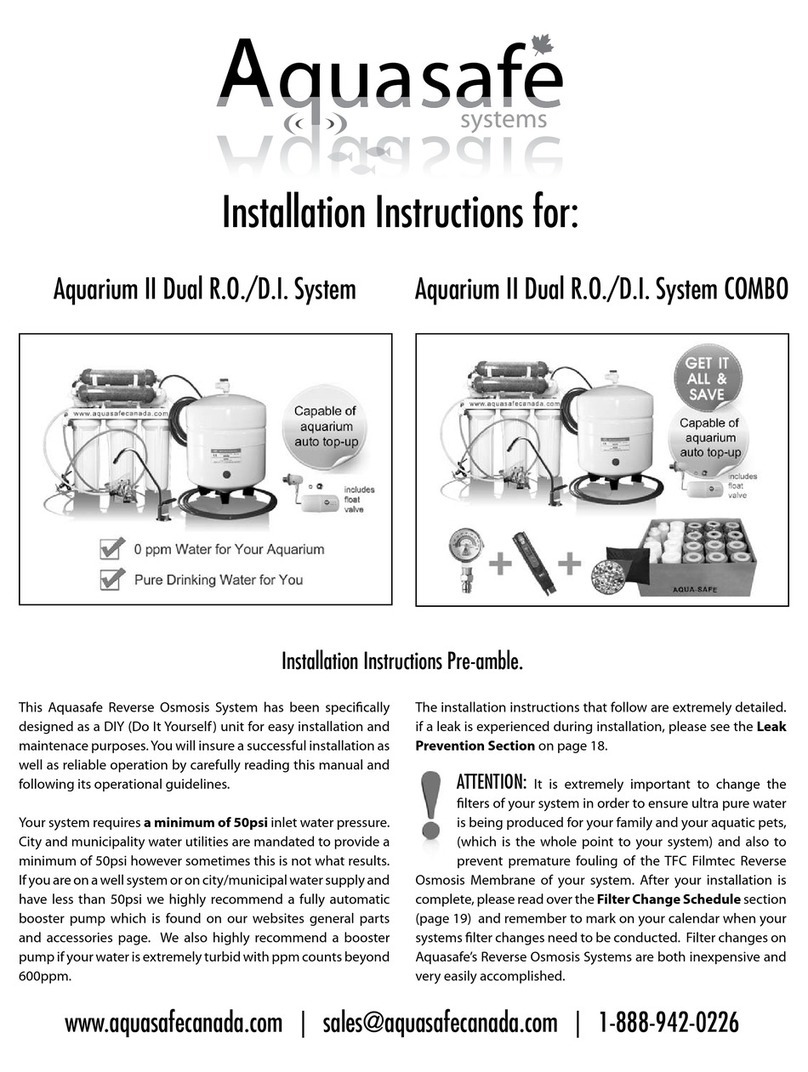
page 8 | Home II + Remineralization Installation Instructions 08/13 | www.aquasafecanada.com
you achieve a 3:1 ratio where 3 parts is BRINE water and 1 part is PERMEATE water. (You can do this by
judging the ow visually or see the note below for how to do a timed measurement.)
When you are condent that you have properly set the ow ratios as explained above, locate the
“marker sleeve” which is found directly under the top dial of E–Z Flush Flow Restrictor. Screw this
marker sleeve down the threads of the shaft of the dial so that it is ush with the main body of the E–Z
Flush Flow Restrictor. This will serve as an exacting marker to the amount of ow restriction you have
set. Now turn the Manual Shut-O Valve back to its (OFF) position and remove the blue tubing from
the E–Z Flush Flow Restrictor.
PLEASE NOTE: The 3:1 ratio explained above can
easily be achieved by visually judging the rate of the
BRINE / PERMEATE ows. However if you want to
achieve exacting ratios between brine and permeate
water you can simply time how long it takes to ll a
certain volume such as a measuring cup or the like
(Fig 13). When doing this“timed measurement” the
permeate water should take three times as long to ll
the same volume over that of the brine water (3:1 Ra-
tio). We do not recommend anything over a 1:1 ratio
as it is extremely important for the R.O. Membrane to
have adequate BRINE ow to be able to ush away the harmful particulates it is removing while lter-
ing the water. A setting near to or at 1:1 ratio is only recommended if you are in a desert environment
and need to conserve as much water as possible or if you are charged large sums of money per gallon
from your water utility. A RATIO BEYOND 1:1 IS VERY LIKELY TO DAMAGE THE R.O. MEMBRANE. YOU
SHOULD ALWAYS HAVE MORE BRINE WATER FLOW THEN PERMEATE WATER FLOW.
For your convenience this system is fully automatic! When you draw water from the Aquasafe faucet,
the system will auto-ll its holding tank and then shut o until more water is drawn from the sys-
tem where the cycle would then repeat. This means that you will always have an abundance of pure,
healthy water on tap at any given time you desire.
Figure 13
Timing flow rates
to set up the
E-Z Flush Flow
Restrictor ‘BRINE’ water
rejected by
R.O. membrane
‘PERMEATE’ water
takes 3x longer to
ll the same cup
The permeate water coming directly out of the R.O. Membrane housing (via the auto shut-o valve)
should achieve an 85% or greater reduction in ppm (parts per million) from that of your unltered
cold tap water in your home that has not been ltered by this system. If a TDS Meter was ordered
with your system gather a few ounces of water in a small glass and test the ppm’s - comparing the
ppm count of the permeate water coming directly out of your R.O. Membrane against that of your
home’s unltered cold water. It may take up to 15-20 minutes for the RO Membrane to become fully
activated and ushed of its food grade preservative to achieve this minimum 85% ppm reduction
Example: Home’s unltered tap water is 300ppm / R.O. Permeate water should be 45ppm or less.
You can nd this value for your results by multiplying them by 0.15 (the 15% of particulates that are
left when 85% have been removed). If you do not see the minimum of 85% reduction in ppm’s after
20 minutes of permeate water ow, it means your R.O. Membrane is not seated properly in the R.O.
Membrane housing. You will need to take the R.O. Membrane out and re-insert as rmly as possible,
reassemble and then re-test the ppm’s as depicted above. If you do need to re-seat your R.O. Mem-
brane it is a very quick and easy procedure. Testing the ppm reduction rate of the permeate water
coming directly out of the RO Membrane housing is the most important ppm reduction test
you can perform and is a sure way to know if your system is performing as it should.
TIP
































